NIST CSF 2.0
The Importance of NIST CSF 2.0 Compliance for Every Business's Cybersecurity Strategy
In today's hyper-connected world, cybersecurity isn't just an IT concern—it's a business imperative. With cyberattacks growing in sophistication and frequency, organizations of all sizes face unprecedented risks to their operations, data, and reputation. Enter the National Institute of Standards and Technology (NIST) Cybersecurity Framework (CSF) 2.0, a voluntary yet powerful tool designed to help businesses manage these risks effectively. Released in 2024, this updated framework builds on its predecessors to provide a flexible, risk-based approach that any business can adopt. But why should your business aim for at least NIST CSF 2.0 compliance? In this blog post, we'll explore the framework's essentials and the compelling reasons to integrate it into your cybersecurity strategy.
What is NIST CSF 2.0?
The NIST CSF 2.0 is a set of guidelines developed by the U.S. government's National Institute of Standards and Technology to assist organizations in managing cybersecurity risks. It offers a taxonomy of high-level cybersecurity outcomes that organizations can use to assess, prioritize, and communicate their efforts, without prescribing specific methods for achieving them. At its heart is the "CSF Core," organized into six key functions:
Govern (GV): Establishes and oversees the organization's cybersecurity risk management strategy, policies, and expectations.
Identify (ID): Helps understand current risks, including assets, suppliers, and vulnerabilities.
Protect (PR): Implements safeguards like identity management and data security to prevent threats.
Detect (DE): Focuses on timely discovery of cybersecurity incidents through monitoring.
Respond (RS): Outlines actions for managing and mitigating detected incidents.
Recover (RC): Ensures restoration of affected assets and operations post-incident.
What's new in version 2.0? It introduces the "Govern" function to emphasize organizational context, strategy, and supply chain risks, making it more comprehensive than previous iterations. It also includes updated resources like Implementation Examples, Quick Start Guides, and Community Profiles to aid adoption. Originally focused on critical infrastructure, CSF 2.0 now applies broadly to all sectors, including industry, government, academia, and nonprofits, regardless of size or maturity level.
Why NIST CSF 2.0 Compliance Matters for Your Business
Adopting NIST CSF 2.0 isn't about ticking boxes—it's about building resilience in a threat landscape where breaches can cost millions and erode trust. Here's why every business should strive for compliance:
1. Comprehensive Risk Management
Cyber threats evolve rapidly, from ransomware to supply chain attacks. NIST CSF 2.0 provides a structured, risk-based approach to identify, assess, and mitigate these risks, helping organizations prioritize efforts based on their unique context. By integrating cybersecurity into enterprise risk management, businesses can prevent disruptions and ensure continuity, even in the face of sophisticated attacks.
2. Scalability for Businesses of All Sizes
One of the framework's strengths is its flexibility—it works for startups, small and medium-sized businesses (SMBs), and large enterprises alike. For mid-market and growing companies, it offers a scalable way to build strong cybersecurity programs without overwhelming resources. SMBs, in particular, can use it to embed security into daily operations, prioritize critical assets, and allocate limited budgets effectively. This democratizes robust cybersecurity, making it accessible beyond just big corporations.
3. Regulatory Compliance and Alignment
Many regulations, such as those in finance, healthcare, and government contracting, reference or align with NIST standards. Achieving CSF 2.0 compliance can simplify adherence to these requirements, reducing legal risks and potential fines. It also promotes a proactive stance, helping organizations stay ahead of emerging mandates in an increasingly regulated digital environment.
4. Building Customer Trust and Competitive Edge
In a market where data breaches make headlines, demonstrating commitment to cybersecurity builds credibility. Compliance with NIST CSF 2.0 signals to customers, partners, and stakeholders that your business takes security seriously, fostering trust and loyalty. It can even become a differentiator, attracting clients who prioritize secure vendors.
5. Cost Savings Through Prevention
The average cost of a data breach is staggering, often running into millions due to downtime, recovery, and reputational damage. By following CSF 2.0 guidelines, businesses can enhance their security posture, detect threats early, and recover faster, ultimately saving money. It's a cost-effective investment in prevention rather than reaction.
6. Fostering Continuous Improvement and Accountability
CSF 2.0 encourages ongoing assessment through Organizational Profiles and Tiers, allowing businesses to track maturity and adapt to new threats. It establishes clear accountability across roles, from executives to IT teams, ensuring cybersecurity is a shared responsibility.
Getting Started with NIST CSF 2.0
Implementing the framework doesn't require a complete overhaul. Start by assessing your current cybersecurity posture against the CSF Core functions. Use NIST's free resources, like Quick Start Guides, to create a tailored profile. For SMBs, focus on high-impact areas like asset identification and basic protections. Consider partnering with cybersecurity experts if needed, and remember: compliance is an iterative process.
Conclusion
In 2025 and beyond, ignoring cybersecurity risks isn't an option—it's a liability. NIST CSF 2.0 compliance equips businesses with the tools to navigate this complex terrain, offering benefits that extend far beyond security to overall resilience and growth. Whether you're a small startup or a global enterprise, adopting this framework is a strategic move that protects your assets, builds trust, and positions you for long-term success. Don't wait for a breach to act—start your journey to CSF 2.0 compliance today.


